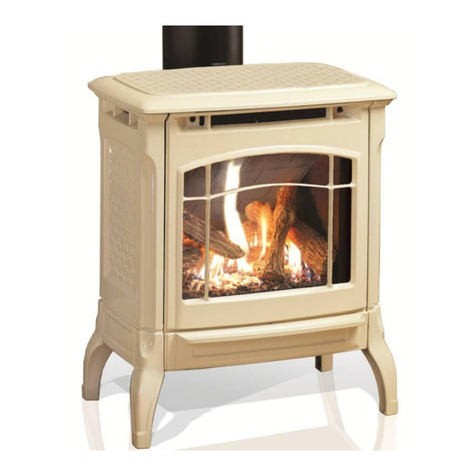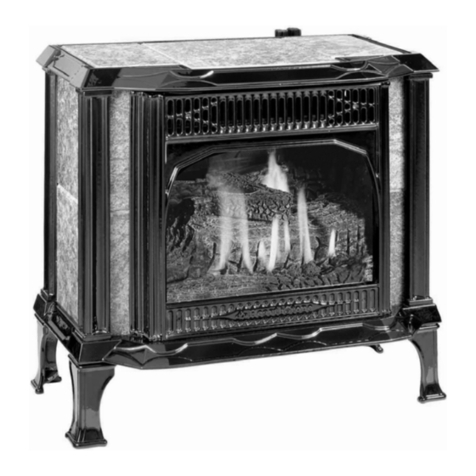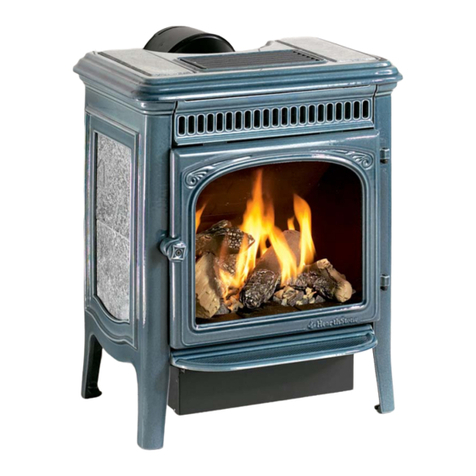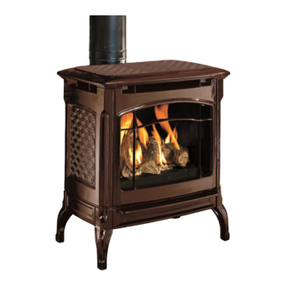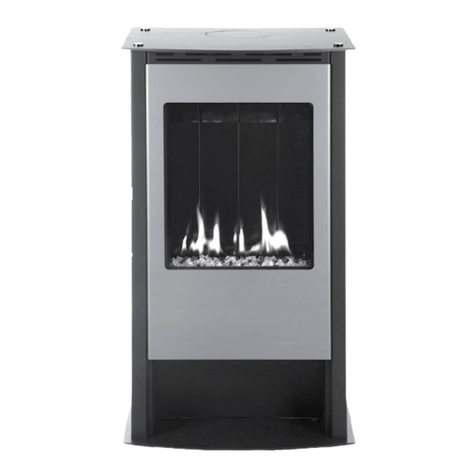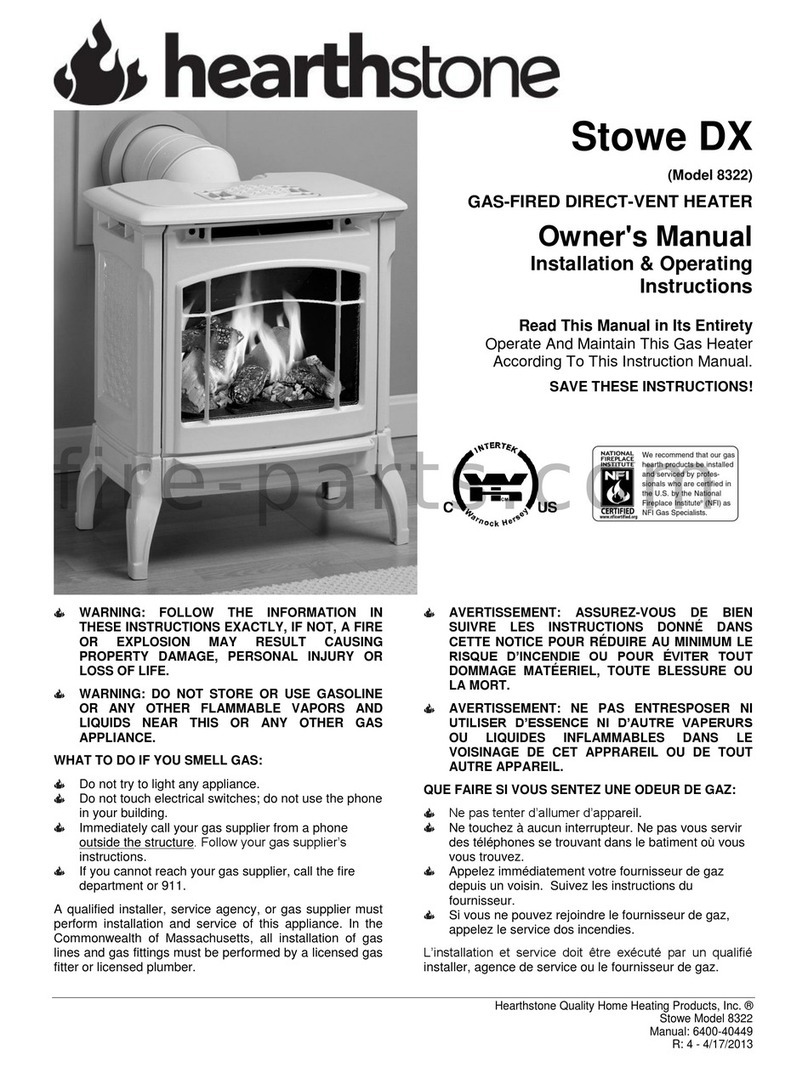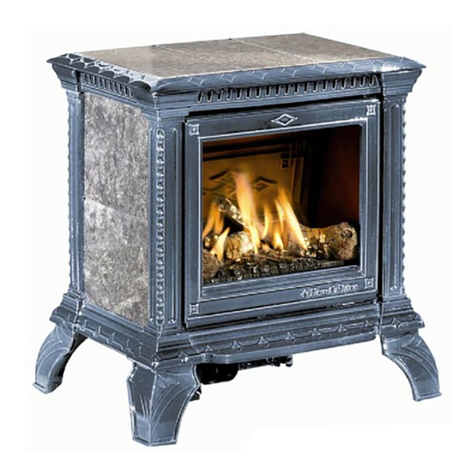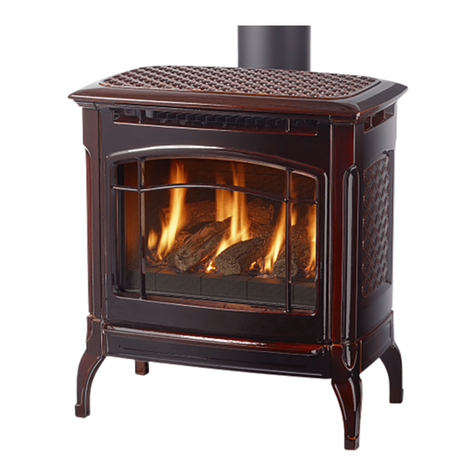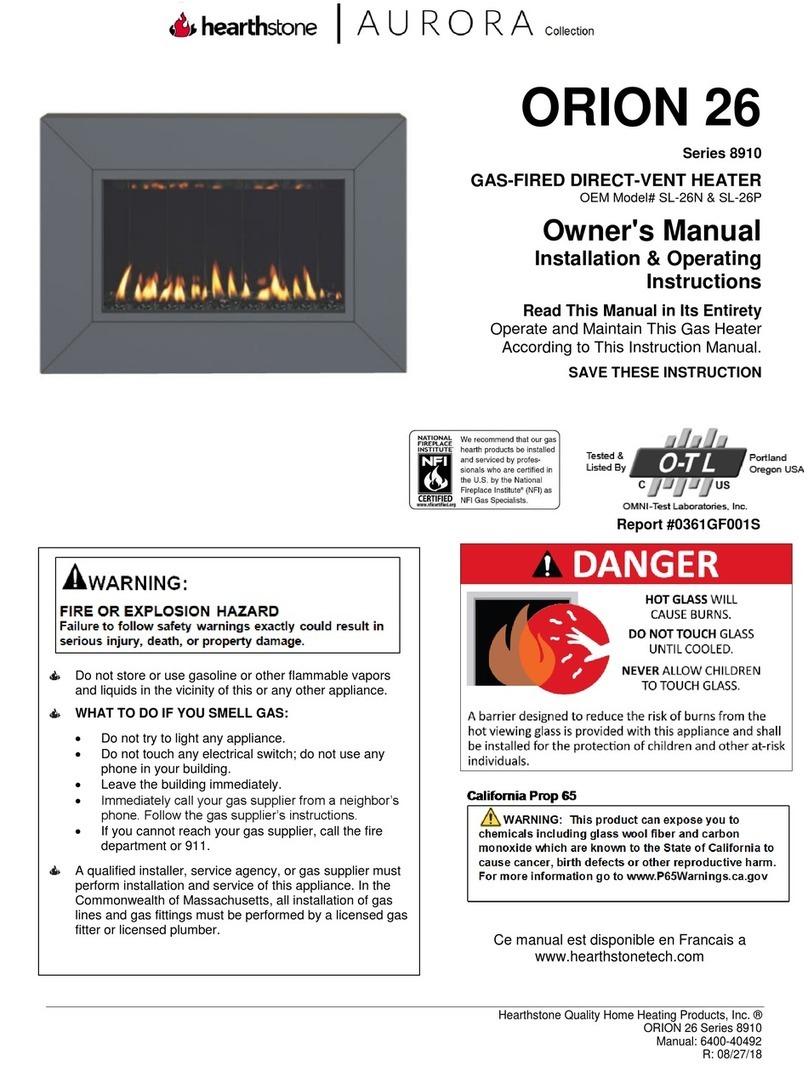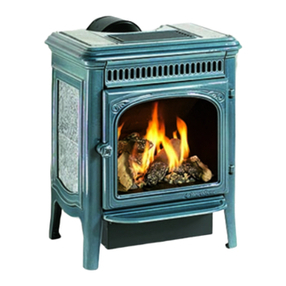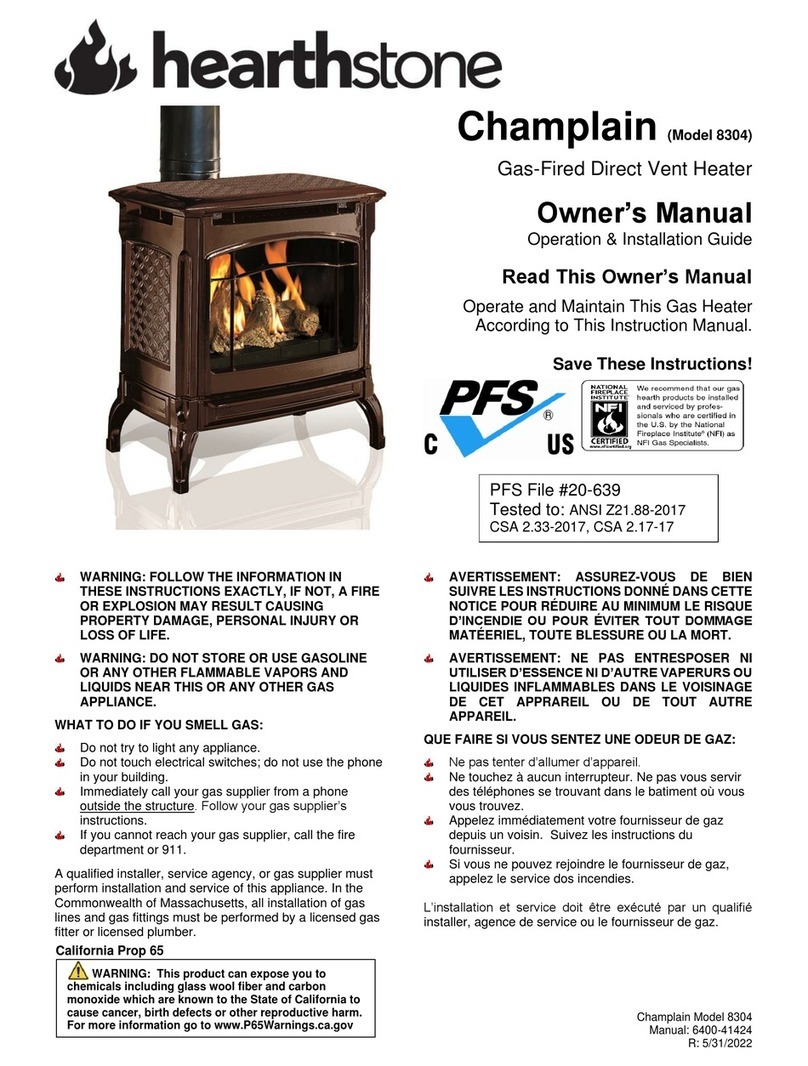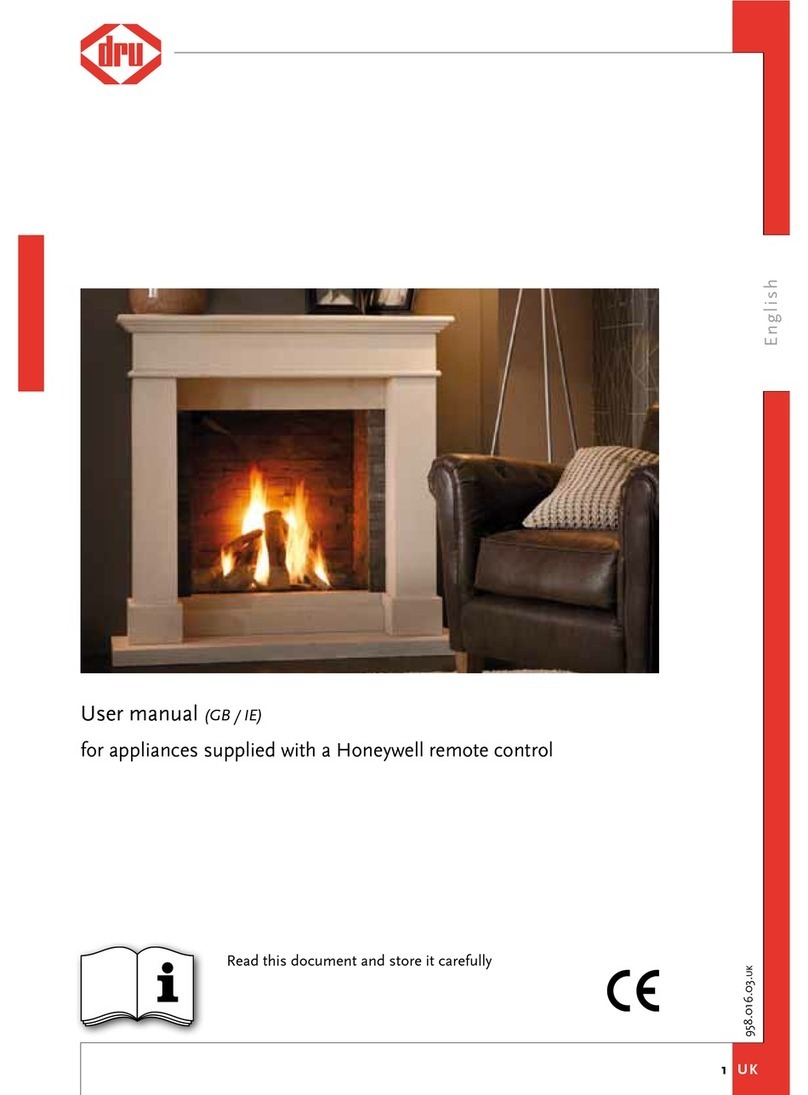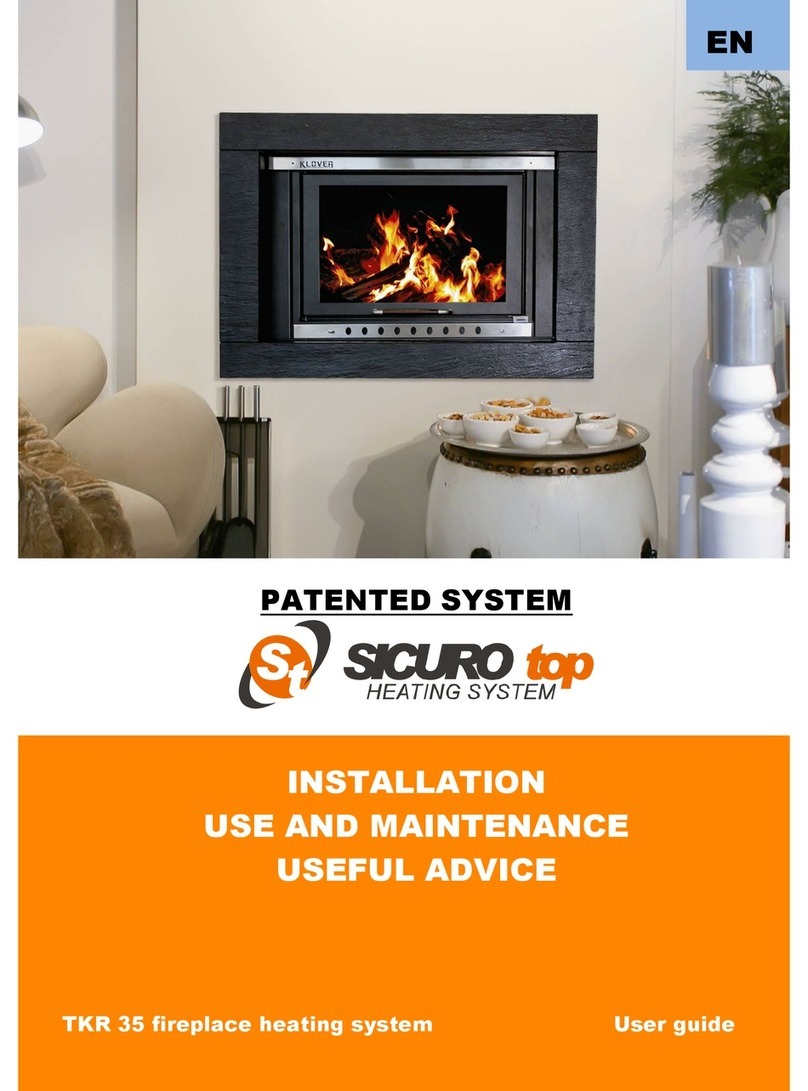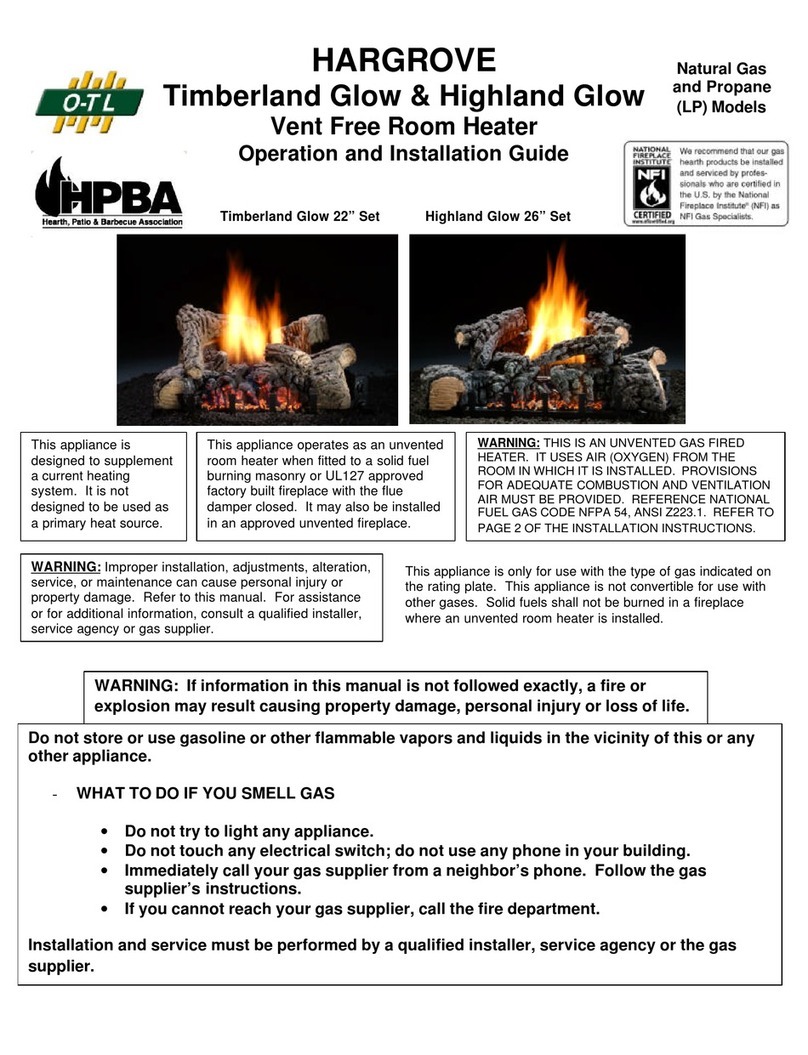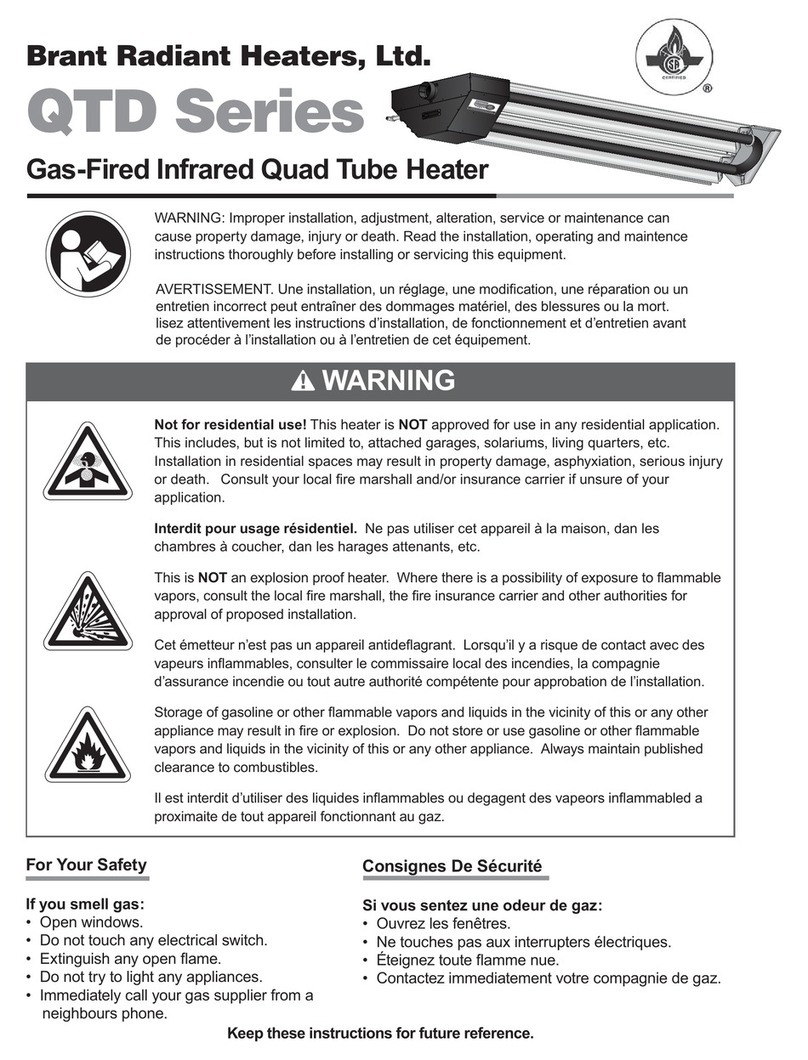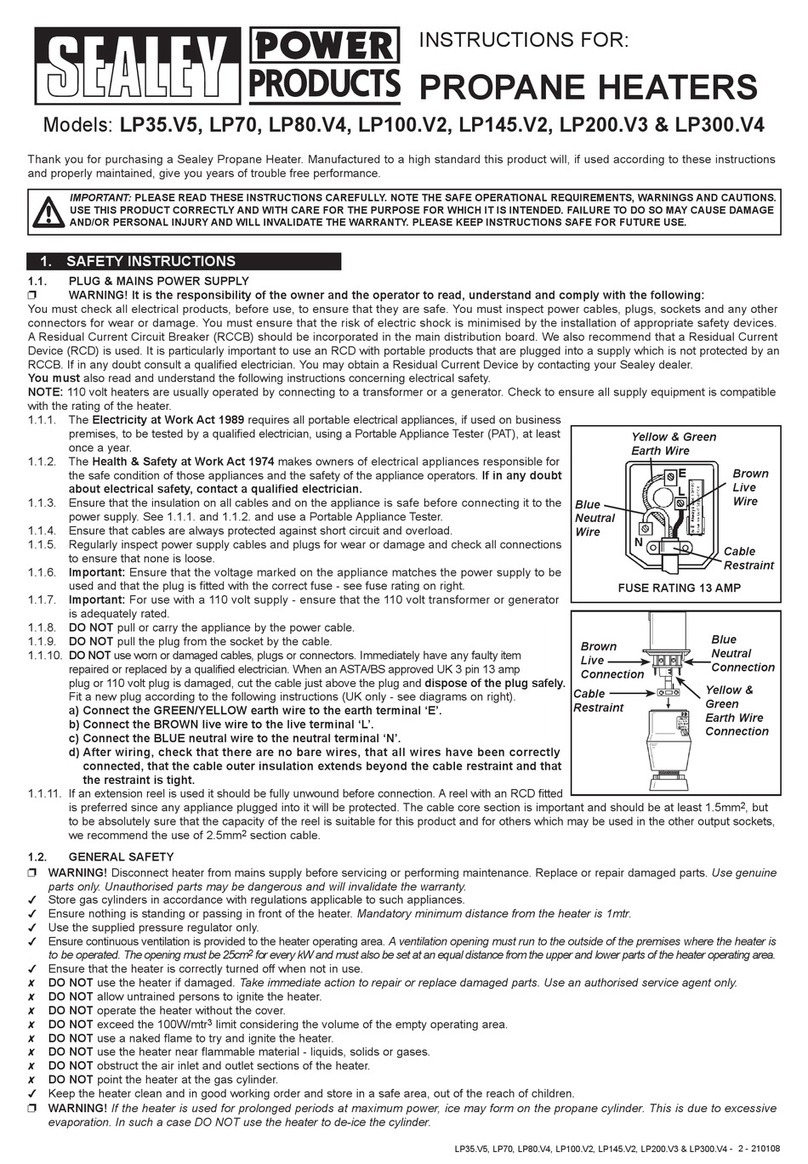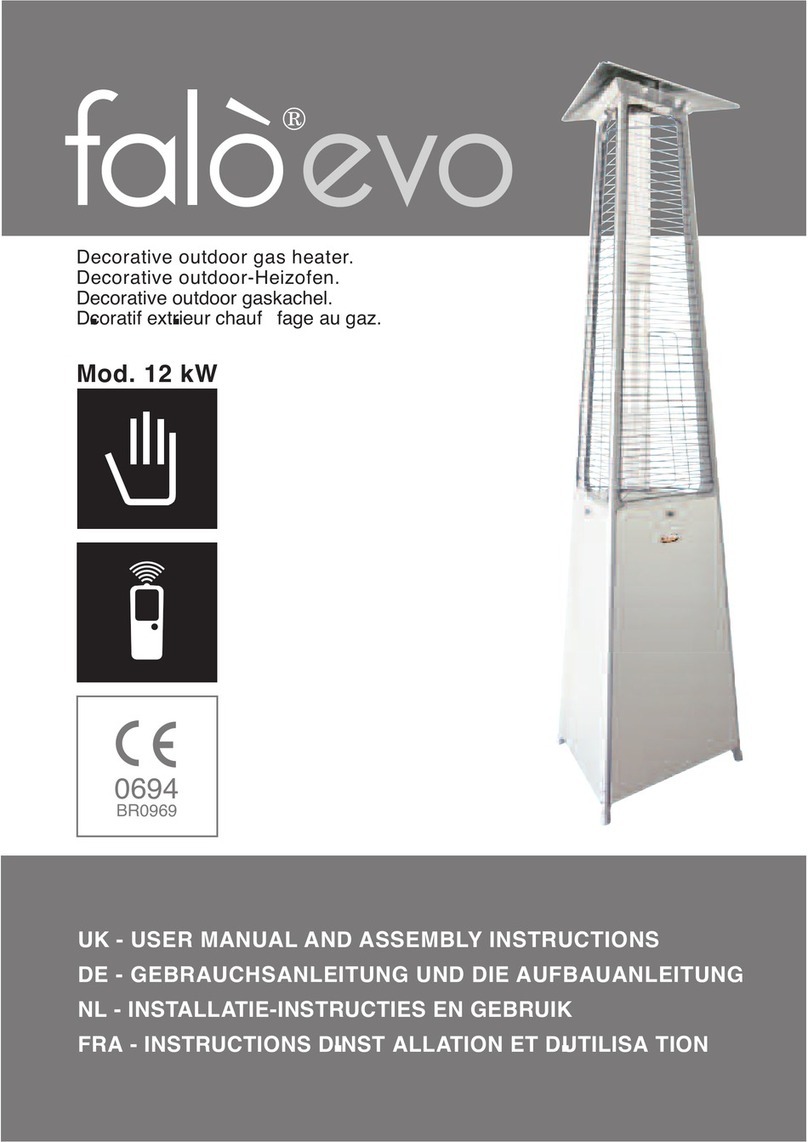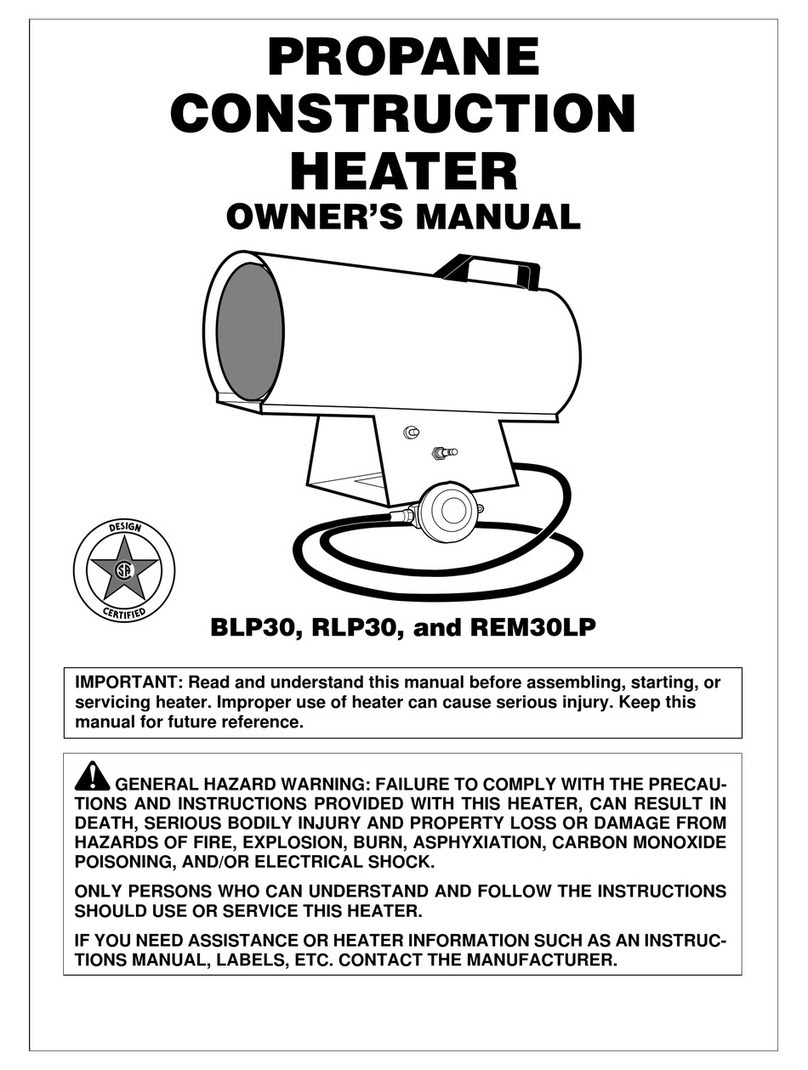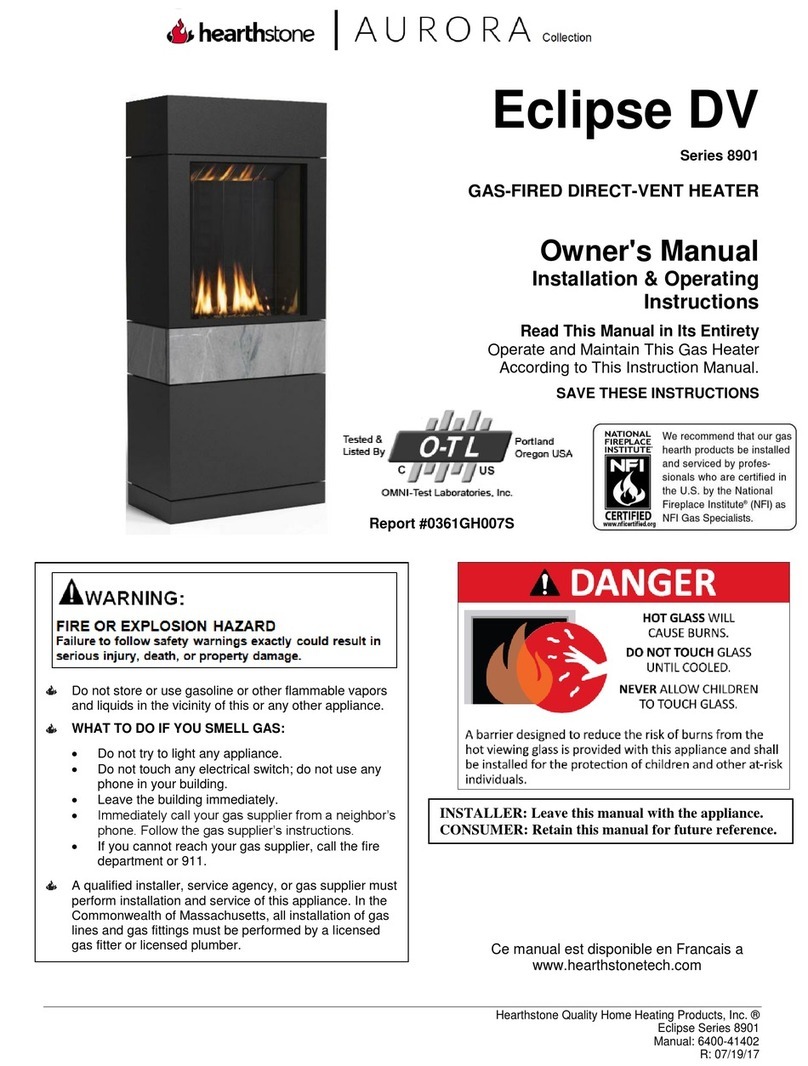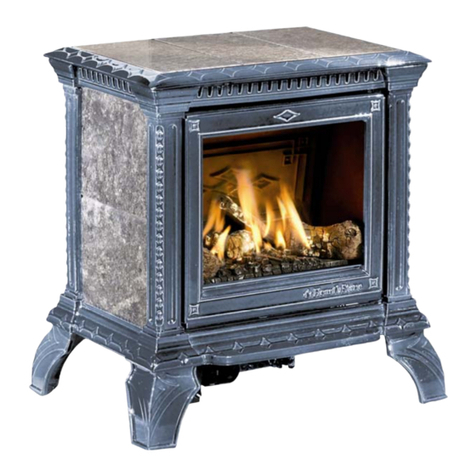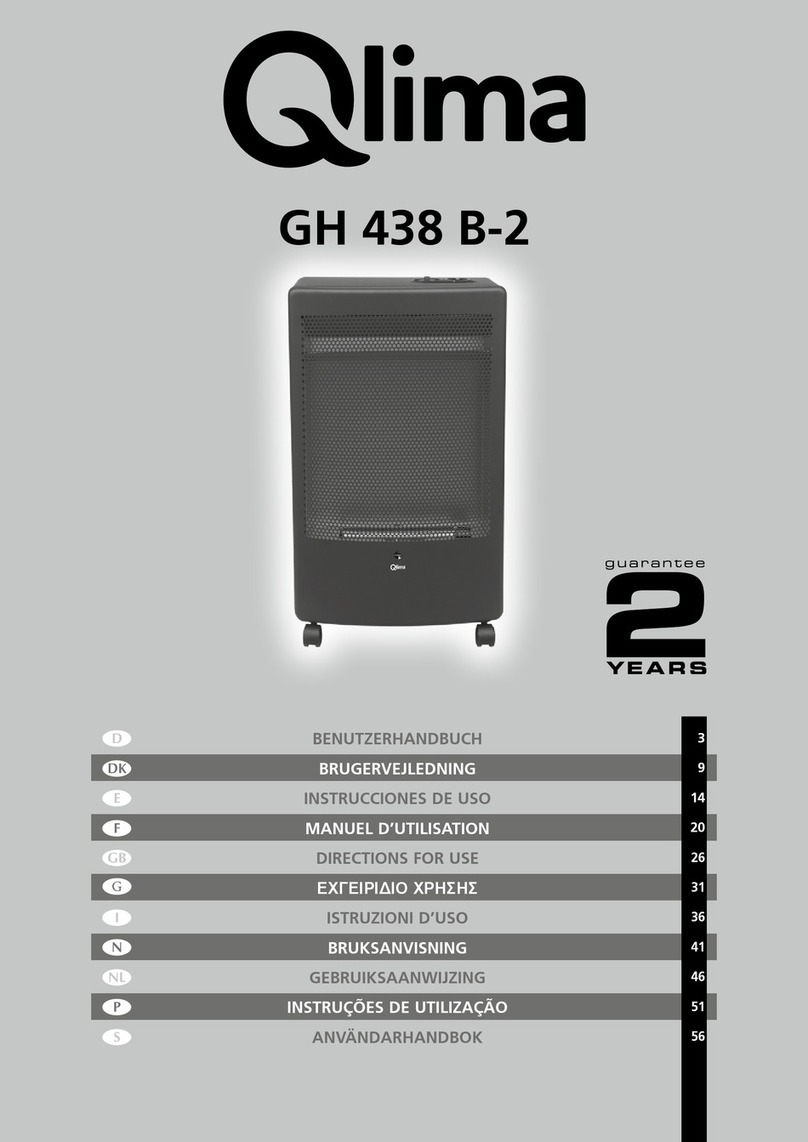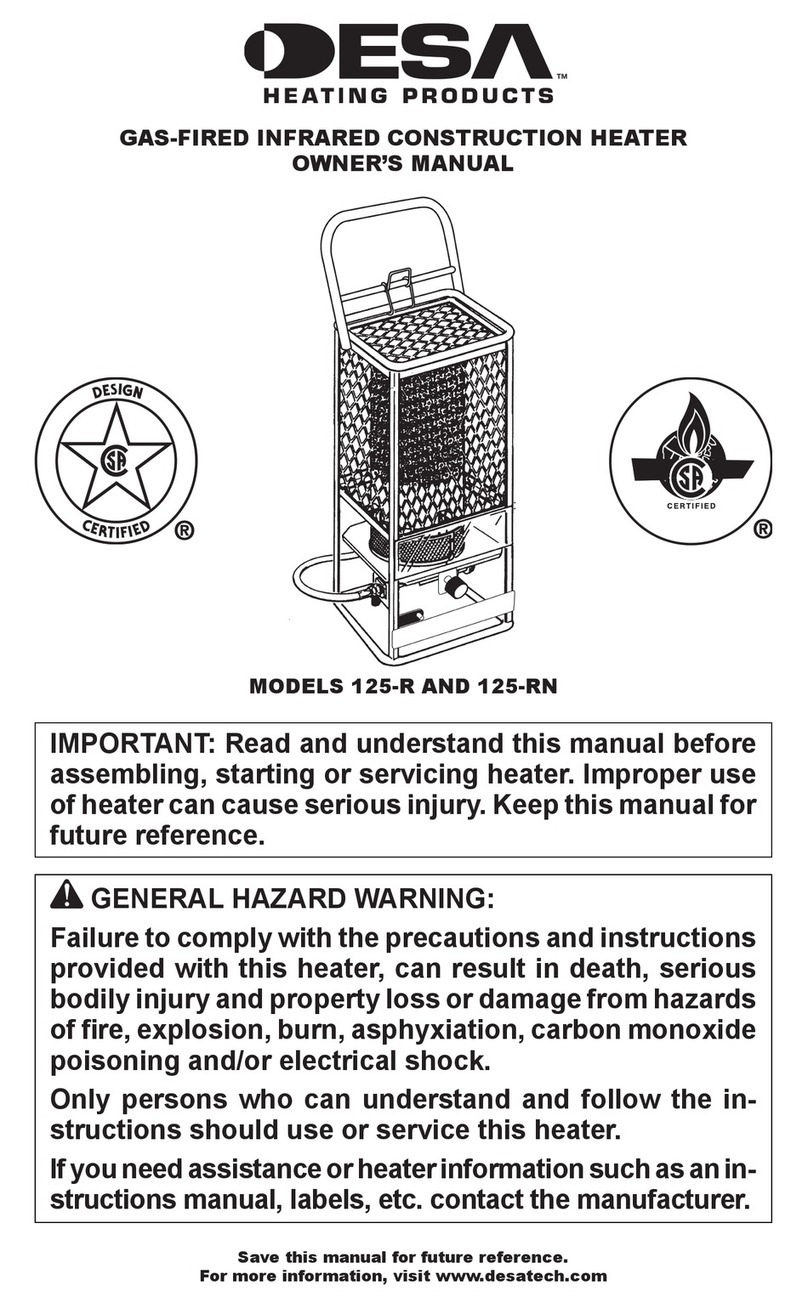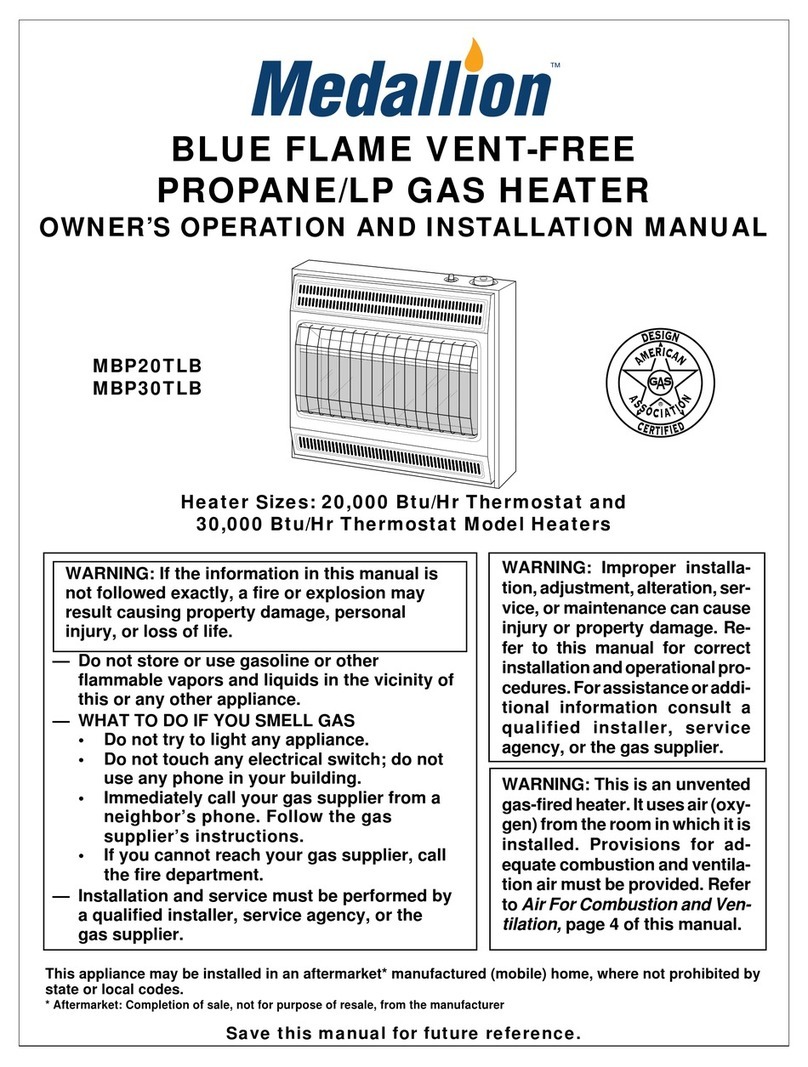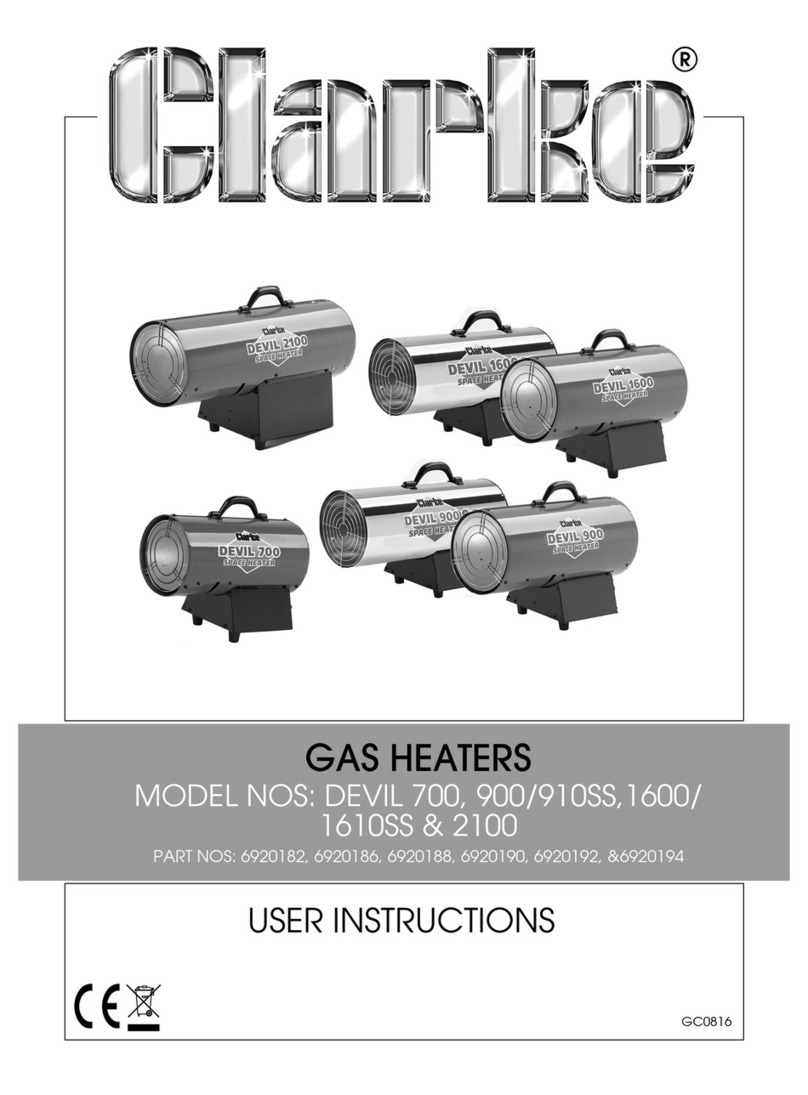
OWNER’S MANUAL Model# 8870 Killington
4
SAFETY INFORMATION Continued
The installation must conform with local codes or, in the
absence of local codes, the current National Fuel Gas
Code, ANSI Z223.1 (NFPA 54).
Do not use this appliance if any part has been under
water. Immediately call a qualified service technician to
inspect the heater and to replace any part of the control
system and gas control, which has been under water.
(Ne pas se servir de cet appareil s’il a été plongé dans
l’eau, complètement ou en partie. Appeler un
technicien qualifié pour inspector l’appareil et
remplacer toute partie du système de contrôle et toute
commande qui ont été plongés dans l’leu.)
During the first few hours of operation the appliance
may produce a slight smoke and/or odor. This is normal
during the first several burns. During the initial burn,
open a window(s) to assist in the removal of the
smoke/odor. If the logs appear to smoke, turn the heater
off and call a qualified service technician.
The appliance and its individual shutoff valve must be
disconnected from the gas supply piping system during
any pressure testing of that system at test pressures in
excess of 1/2 psig. (3.5k Pa). The appliance must be
isolated from the gas supply piping system by closing its
individual manual shutoff valve during any pressure
testing of the gas supply piping system at test pressures
equal to or less than 1/2 psig (3.5 kPa).
CERAMIC FIBER LOG SAFETY
INFORMATION
If the decorative ceramic log material supplied with the
Killington is damaged or missing, it must be replaced
with the same, approved replacement parts supplied by
the manufacturer. These components affect the
combustion quality and safety of the heater. Do not
replace fiber ceramic logs with unapproved ceramic logs
or any other material. Always wear gloves and safety
goggles while handling the log set and ember strip.
SHOCK HAZARD
This appliance is equipped with a three-prong
(grounding) plug for protection against shock hazard and
should be plugged directly into a properly grounded
three-prong receptacle. Do not cut or remove the
grounding prong from the plug.
WARNING
This gas appliance must not be connected to a chimney
flue serving a separate solid-fuel burning appliance.
SERVICE CAUTION
If you believe your Killington is not, in any way,
performing properly, immediately discontinue operation
until the unit has been inspected and approved by
qualified service personnel. Prior to servicing the unit,
turn the valve control knob clockwise to “OFF”. The
unit should be cool prior to servicing and cleaning. Any
component removed during servicing should be replaced
prior to operation. Use of any components not supplied
by HearthStone on the stove voids all warranties. Do
not substitute components.
DO NOT LIGHT PILOT OR MAIN
BURNERS BY HAND
The standing pilot light equipped with this gas heater is
lit by using a piezoelectric spark generator, as described
in the How To Turn the Unit On & Off section of this
manual. Never attempt to light the pilot or main burners
by hand (with a match or lighter). After repeated
attempts, if the pilot light fails to light, discontinue
operation, turn off the gas at the gas control valve, and
immediately contact qualified service personnel for
assistance.
HOT SURFACES
Certain exposed surfaces of the Killington will reach
high temperatures during normal operation. Clearances
to combustibles must be maintained, as specified in the
Clearances To Combustibles section of this manual. Due
to high temperatures the appliance should be located out
of traffic and away from furniture, draperies, clothing
and flammable materials. Children and adults should be
alerted to the hazards of high surface temperatures and
should stay away to avoid burns to skin or clothing
ignition. Young children should be carefully supervised
when in the same room as the appliance. Clothing or
other flammable material should not be placed on or near
the appliance. (Surveille les enfants. Garder les
vêtements, les meubles, l'essence ou autres liquides à
vapeur inflammables lin de l'appareil.) Clean the area
around, under, and behind the unit on a regular basis to
prevent the accumulation of dust and lint.
MUST BE VENTED TO THE OUTSIDE
Never vent the gas heater to other rooms or buildings.
Do not burn the gas heater with the front open. Do not
burn gas heater with broken glass. Only open front for
routine service. Do not slam or strike glass.
